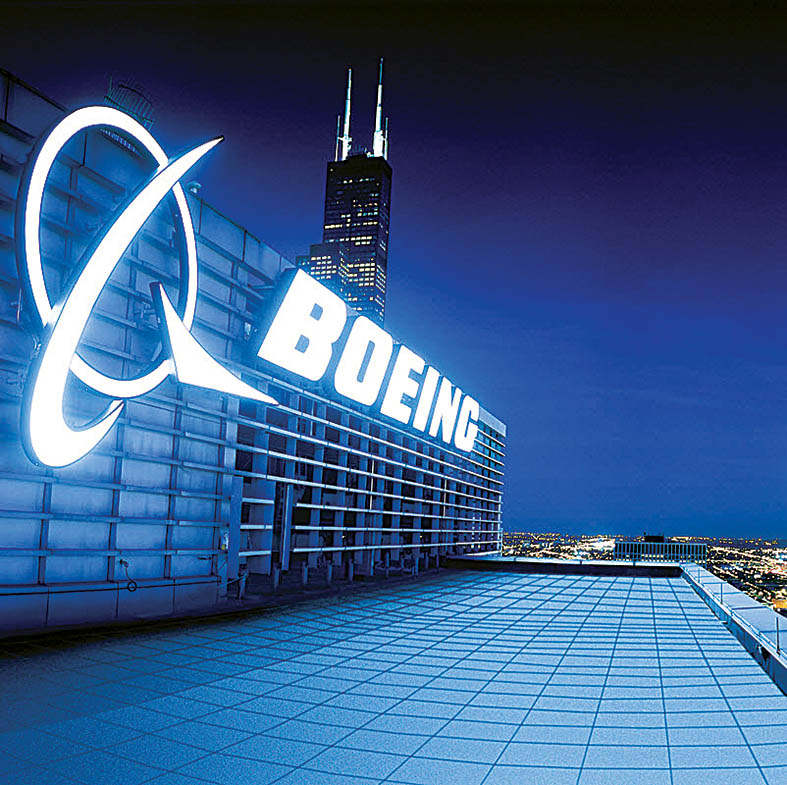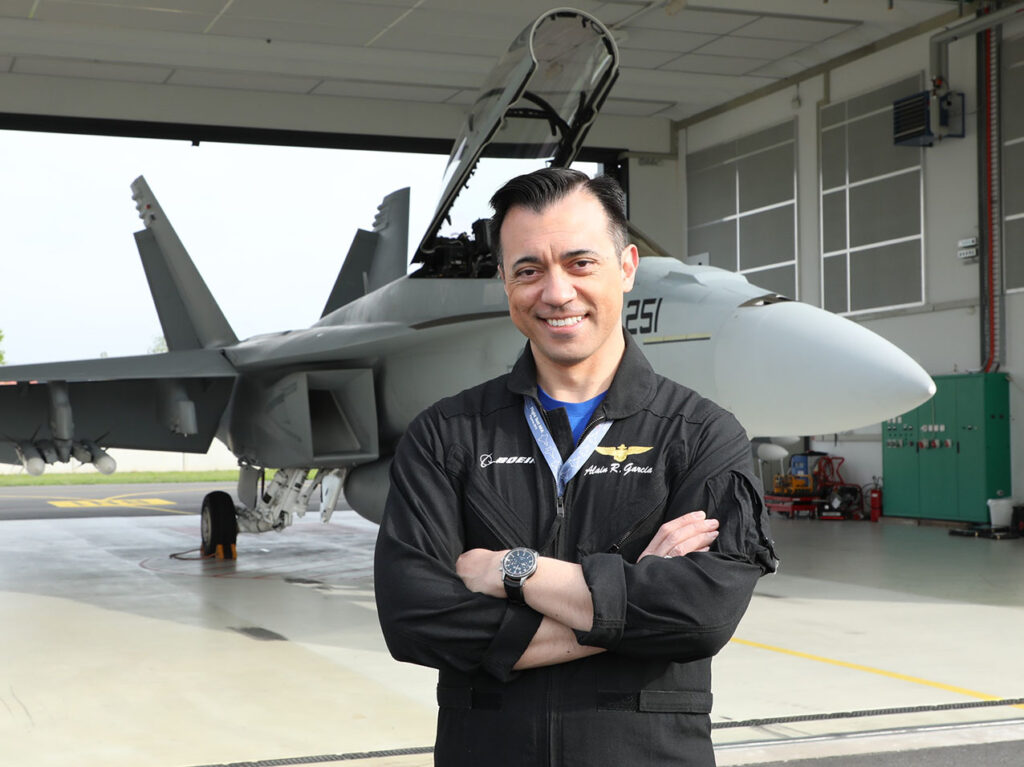Boeing’s P-8I and F/A-18 Super Hornet Block III are equipped to bolster maritime capabilities for the Indian Navy
 New Delhi, December 4. The Indo-Pacific consists of more than 60% of world population, represents 44% of the world surface area, accounts for 60% of global GDP, and steers more than two-thirds of global growth. This important region comprises of 38 countries interdependently fastened and connected by the Indian Ocean. This makes the role of the Indian Navy critical in defending India’s maritime interest in the Indo-Pacific region. In its endeavour to upgrade and transform its capabilities, the Indian Navy can benefit from platforms which offer commonality and interoperability opportunity for closer cooperation between the navies and air forces of partner countries in the Indo-Pacific.
New Delhi, December 4. The Indo-Pacific consists of more than 60% of world population, represents 44% of the world surface area, accounts for 60% of global GDP, and steers more than two-thirds of global growth. This important region comprises of 38 countries interdependently fastened and connected by the Indian Ocean. This makes the role of the Indian Navy critical in defending India’s maritime interest in the Indo-Pacific region. In its endeavour to upgrade and transform its capabilities, the Indian Navy can benefit from platforms which offer commonality and interoperability opportunity for closer cooperation between the navies and air forces of partner countries in the Indo-Pacific.
Boeing has been engaging with the Indian Navy on their current as well as future requirements for national security, and regularly engages in discussions over the value our portfolio can deliver to develop capabilities they require for the execution of their missions.

F/A-18 SUPER HORNET BLOCK III
Offering better synergies for naval aviation cooperation in the Indo-Pacific
The role of naval aviation in defending India’s maritime interests is expected to get significantly enhanced as a result of the geo-political situation in the region. The partnership between like-minded countries in the Indo-Pacific will only grow stronger, and the strength of these Indo-Pacific partnerships will be determined by the abilities of the participating countries to work together seamlessly. The Boeing F/A-18 Super Hornet Block III for the Indian Navy will offer several such strategic advantages to India.
The U.S. Navy operates more than 800 Super Hornets and EA-18G Growlers, the electronic attack version of the F/A-18 and have logged over 2.5 million flight hours on the fleet. The Block III configuration is suited to protect India’s maritime interests as it is built to meet the broadest range of missions while benefiting from the upgrades and knowledge related to U.S. naval aviation. We anticipate the Super Hornet opening up opportunities for greater interoperability between the two navies for a more secure Indo-Pacific.
Supporting the growth of the Indian aerospace and defence industry
Boeing plans to further strengthen its Make in India initiatives, building on a successful track record of contributing to India’s indigenous aerospace and defence ecosystem. As part of this effort, Boeing anticipates $3.6 billion in economic impact to the Indian aerospace and defence industry over the next 10 years, with the F/A-18 Super Hornet as India’s next carrier-based fighter. The economic impact would be over and above Boeing’s current offset obligations and plans in the country. The strategy includes five key pillars:
- Supply Chain Development and Manufacturing: The new plan builds on Boeing’s sourcing of $1 billion annually from over 300 suppliers on parts, assemblies and services from Indian suppliers. Boeing has added several new Micro, Small and Medium Enterprises (MSMEs) suppliers in support of our commitment to Aatmanirbhar Bharat, and they account for over 25 percent of our suppliers in India. The plan also envisages potential for additional manufacturing opportunities, including the F/A-18’s Outer Wing and Nose Barrel component manufacturing and assembly. Additionally, Boeing is reviewing several hundred other machined assemblies that could be placed with Indian suppliers.
- Engineering and Technology Transfer: Boeing envisions working closely with industry and the U.S. and Indian governments to share technology and transfer work of the F/A-18 fighter jets in India, based on interest and business case. Boeing will also leverage investments made in the Boeing India Engineering & Technology Center (BIETC) and its talented pool of 4,000+ engineers and innovators in Bengaluru and Chennai to drive growth and innovation, and advance work in materials, manufacturing technologies and methods, and the “Digital World.” As a part of “Digital World,” new manufacturing processes have been established, and Boeing has unlocked the potential of the Full-Size Determinant Assembly (FSDA) approach for its customers. With the F/A-18, Boeing will continue to explore opportunities to bring FSDA-related advanced technologies to the Indian defence industry.
- Support and training: Boeing will collaborate with the Ministry of Defence and Indian industry to develop long-term and self-reliant sustainment solutions for the Super Hornet fleet to deliver increased aircraft availability and mission readiness. This will be done by leveraging the existing industry ecosystem across key support areas such as On and Off Aircraft Maintenance, Sustaining Engineering, Fleet Operations Support, and Training, and by leveraging the local Maintenance Repair & Overhaul (MRO) capabilities that Boeing Defence India is building.
- Investments: Boeing India employs over 5,000 employees directly, and over 7,000 are employed by key suppliers in India. Boeing’s joint venture with Tata – Tata Boeing Aerospace Limited – manufactures aerostructures for Apache attack helicopters for global customers out of Hyderabad. In addition, foreign direct investment (FDI) of $200 million has been made by Boeing towards a 43-acre state-of-the-art engineering and technology campus under construction in Bengaluru. This campus will be the largest Boeing-owned facility of its kind outside the U.S.
- Impact by Hornet Industry Team: The diversity and strength of the Hornet Industry Team, comprising of General Electric, Northrop Grumman and Raytheon, has the potential to deliver significant benefits to Indian industry. These industry leaders have proven their commitment to India by collaborating with Indian entities and delivering on Aatmanirbhar Bharat objectives. The F/A-18 will enhance collaboration with Indian industry by facilitating knowledge transfer and promoting autonomy in operating and maintaining India’s fleet of F/A-18 aircraft. Further, this knowledge transfer may also provide opportunities for India to support F/A-18 fleets around the world through manufacturing and sustainment.
Economic efficiency
The F/A-18 Super Hornet has a very attractive lifecycle cost too. It not only has an affordable acquisition cost, but it costs less per flight hour to operate than any other tactical aircraft in production in the U.S. forces inventory. This is possible because the fighter is designed for ease of maintainability and offers impressive durability with the life of the airframe up to 10,000 hrs. Boeing’s sustainment program – “By India, For India” – is built on the success of existing programs that the company is executing for the Indian Air Force (IAF) and the Indian Navy today. These programs will enable us to develop select capabilities to sustain the Super Hornet out of India.
The Super Hornet is powered by the GE F-414 engine that has clocked cumulatively more than 5 million hours. The same family of engines is powering India’s indigenous Light Combat Aircraft inducted by the IAF. The commonality in engines would create scale efficiencies for potential sustainment opportunities in India in the future.
P-8I – A PROVEN MULTI-MISSION MARITIME PATROL AIRCRAFT
Later this month on December 19, it will be a decade since the first P-8I was delivered to the Indian Navy. This is a significant milestone in our growing relationship with the navy. Notably, the Indian Navy was also the first international customer for the P-8 and today operates the largest non-U.S. fleet.
Since the induction of the P-8I in the Indian Navy, Boeing has been supporting the fleet to ensure high rates of mission readiness. The 12 P-8Is in the Indian Navy’sarsenal significantly contribute to the Indian Navy’s capacity to keep the vast areas of interest in the Indo-Pacific under surveillance – while also playing a greater role in regional maritime security. The patrol aircraft is an integral part of the Indian Navy’s fleet and has surpassed 35,000 flight hours since it was inducted in 2013.In addition to unmatched maritime reconnaissance and anti-submarine warfare capabilities, the P-8I has been deployed to assist during disaster relief and humanitarian missions. We believe that the Indian Navy may have a requirement for more P-8Is as also more Harpoons and we stand ready to support them.

A formidable part of the Indian Navy’s fleet, the P-8 is a proven system with more than 140 aircraft in service that have executed more than 400,000 mishap free flight-hours around the globe.The P-8isdesigned for long-range anti-submarine warfare (ASW), anti-surface warfare (ASuW), and intelligence, surveillance and reconnaissance (ISR) missions. The P-8 delivers highest levels of quality, reliability, and operability. A true multi-mission aircraft, it is defined by a unique combination of state-of-the-art sensors, proven weapons systems, and a globally recognized platform. Along with the Indian Navy, the P-8 family includes the U.S. Navy, the United Kingdom’s Royal Air Force, Royal Australian Air Force and Royal Norwegian Air Force. Militaries that have selected the P-8 include the Royal New Zealand Air Force, Republic of Korea Navy, and German Navy.
The P-8 combines the most advanced weapons system in the world with the cost advantages of the most operated commercial airliner on the planet. The P-8 shares 86% commonality with the commercial 737NG, providing enormous supply chain economies of scale in production and support. Boeing’s expertise in commercial fleet management and derivative aircraft sustainment also provides customers with greater availability at a lower operational cost. The P-8 is engineered for 25 years/25,000 hours in the harshest maritime flight regimes, including extended operations in icing environments.
The potential selection of the F/A-18 Super Hornet Block III and additional P-8Is can further enhance the opportunity for closer cooperation between the navies and air forces of partner countries in the Indo-Pacific. We are confident about the rising importance of the Indian Navy in the Indo-Pacific, and are committed to supporting and enabling its journey.
– Alain Garcia, Vice President, India Business Development, Boeing Defense, Space & Security and Global Services.





